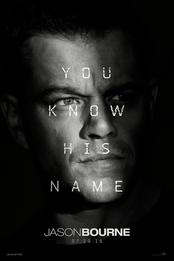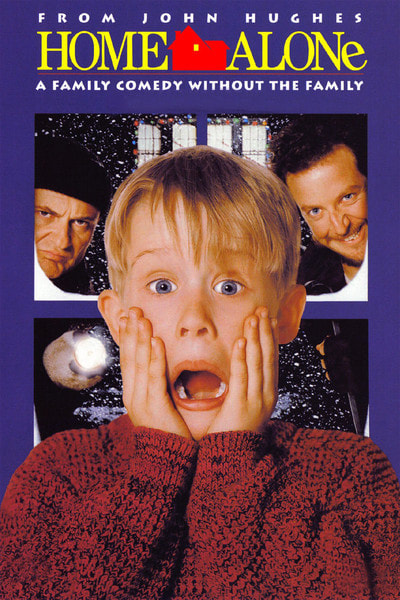|
Today is a historic day for Ireland. The results from yesterday’s referendum on repealing the eighth amendment are in, and the Irish people overwhelmingly voted yes (66% for repeal). The eighth amendment of the Irish constitution denies women the right to abortion, including victims of rape and incest and in cases of fatal foetal abnormality. This amendment was adopted in 1983. It guarantees the right to life of the “unborn”, meaning the life of the woman and the life of the foetus are seen as equal. It has led to much suffering and in some cases death for the women of Ireland. It has meant that for 35 years women wishing to terminate a pregnancy have had to travel abroad to do so. It has also meant that some women in Ireland were forced to carry their pregnancy to term even though it was known the baby would be born dead.
One of the women who died because of the eighth amendment was 31-year-old Savita Halappanavar, a dentist, who was miscarrying in an Irish hospital in 2012. She died of septicaemia because the medical staff would not terminate the pregnancy. Halappanavar had requested a medical termination—after being told she was miscarrying—but she was refused. The medical staff allowed her to suffer in agony for three days. Their reason: the 17-week-old foetus still had a heartbeat. An inquest was ordered, and the BBC reported in 2013: “Dr. Peter Boylan, the former master of the National Maternity Hospital in Dublin, told the inquest that Savita would probably still be alive today if she had got a termination in the first three days of her stay in the hospital, but that under Irish law an abortion would have been illegal because there was ‘not a real and substantial risk to her life at that stage.’”[1] Pictured below is the mural of Savita Halappanavar in Dublin, where many people have left flowers and notes in the last few days. This historic vote will lead to better reproductive healthcare for the women of Ireland. Today we celebrate this monumental win for women's rights. We remember Savita Halappanavar. Out of compassion for women the people of Ireland have said a resounding Never Again! This is a day to remember. [1] BBC News, How Savita Halappanavar’s death called attention to Irish abortion law, April 19, 2013, Shane Harrison © 2018 Alline Cormier
0 Comments
As Harvey Weinstein made the short walk from his car to the entrance of a New York police station this morning a man standing behind a row of policemen and metal barriers—serving to protect Weinstein—shouted, “Harvey, what took you so long? What took you so long to surrender, Harvey?” I think the answer to this question is simple enough: men accused by women of sexual harassment and/or sexual misconduct typically deny the accusations as long as possible and then defend themselves as best they can, typically with more lies. It’s a timeworn modus operandi. The real question is: why did it take the justice system so long to deal with the man accused by over 70 women of sexual harassment or sexual misconduct? It has been over seven months since some forty women came forward alleging he sexually harassed or sexual assaulted them. Some of the women allege that he raped them. For me the answer to this question is also simple enough, but fixing the problem will be as arduous as moving mountains. The reason it took so long for the justice system to deal with Weinstein is that we live in a sexist society where women are treated as second class citizens. Men routinely get away with sex crimes against women, and it has always been this way. That is the short answer. If Weinstein had committed a crime against property he would have been immediately dragged away by the police and dealt with promptly. In our societies, however, women count less than property.
This morning Weinstein spent roughly one hour in a police station after turning himself in. He was arrested and charged with rape, criminal sex act, sex abuse and sexual misconduct for incidents involving two separate women. He will be released on bail. This is the extent to which the American justice system deems a man accused by dozens of women of violating them should be punished seven months after these women came forward. Weinstein is a 66-year-old white male who has been enjoying an inordinate amount of privilege for decades, and it does not appear that this privilege has been lost yet. This morning the BBC reported that “[p]rosecutors in Los Angeles are reviewing several cases involving accusations against Mr Weinstein after police investigations, and London's Metropolitan Police are also assessing a sexual abuse allegation against him.”[1] It is certainly taking them a long time to get organized. Weinstein will eventually get his day in court and will hopefully serve time for his crimes. What is amazing is that he enjoyed so much freedom in spite of his crimes and was dealt with so generously by the justice system in the interim. [1] BBC, Harvey Weinstein charged with rape following New York arrest, May 25, 2018 © 2018 Alline Cormier Horror movies typically have little to offer female viewers. What Lies Beneath (2000) stands apart. It is unusual in many respects. For starters it is full of solidarity between women, something rarely seen in the genre. Also, no women are shown being murdered, something exceptionally rare in the genre. Just those two things put it well ahead of most horror movies in terms of what it has to offer female viewers. It also passes the Bechdel test (a test that serves as an indicator of the active presence of women in movies) in an early scene. Most interesting though is likely the plot, which revolves around a murdered woman who is given the chance to come back from the dead to seek justice (i.e. to be avenged) and who is assisted by her 'rival' (the woman whose husband she was having an affair with). There are other things that make it enjoyable. The protagonist, Michelle Pfeiffer, has a good relationship with three other women, including her daughter, and she appears in several scenes with other women, talking about things besides men. She also shows a lot of courage in several scenes, in spite of her lack of confidence. The ending, too, is enjoyable for women—something that can rarely be said of a horror movie—and the filmmakers use the last shot to show more solidarity between women. In the horror genre I do not know of any that have more to offer female viewers. This likely has much to do with the story being co-authored by a man and a woman (Sarah Kernochan). There are a few other things that make What Lies Beneath enjoyable, but I'm saving those for my book. Next time you're in the mood for horror don't waste your time with Halloween (1978), Carrie (1976), Rosemary's Baby (1968), Psycho (1960) or other classics of the genre. They have little to nothing to offer women, except of course more material for their nightmares. © 2018 Alline Cormier When I opened a file for Jason Bourne (2016) I was mildly surprised to see that Julia Stiles would be in it, given that her Hollywood star has faded somewhat, and there are plenty of younger actresses who are much more popular. Then I began analysing the movie, and it quickly became apparent that she would be killed off. This was much less surprising. Stiles was 35 years old in 2016, and the lead female in Jason Bourne is Alicia Vikander, who was then 28 years old. A seven-year age difference may not seem significant, but for actresses it is. Their shelf life is still very short. Moreover, the filmmakers behind the Bourne franchise are hardly progressive when it comes to women: at least three Bourne movies fail the Bechdel test. The Bourne Identity (2002) fails because no two named female characters ever speak. The Bourne Ultimatum (2007) fails because the only time two named female characters speak they talk about a male. Jason Bourne (2016) represents a step backwards because no two named female characters even speak. The only time two women speak face to face is when Vikander checks into her hotel, and she talks very briefly to the female receptionist. There is also the sexist Hollywood age gap to consider. The protagonist, Matt Damon, was 46 years old in 2016, which means that the women he was paired with were 11 years (Stiles) and 18 years (Vikander) his juniors. In The Bourne Identity (2002) he was paired with Franka Potente, who was only four years his junior, and Julia Stiles, who was 21 years old. Jason Bourne (2016) is a two-hour movie. Apparently two hours is insufficient to fit in a scene where two named female characters exchange a few words. It was long enough to include an interminable car chase though. Filmmaking is about making choices. Unfortunately, the filmmakers behind this franchise keep making regressive ones. If it does not strike you as odd that no two women ever speak in a movie ask yourself this: how many movies can you name in which no two men ever speak? © 2018 Alline Cormier I have included Sherlock Holmes (2009), the one starring Robert Downey Jr. and Jude Law, to my film guide for women. It also stars Rachel McAdams as Irene Adler and Kelly Reilly as Mary Morstan. Mrs. Hudson is played by Geraldine James. Given the presence of three women in Holmes and Watson's lives it was reasonable to hope that two of them might share a scene and say something to each other. They do not. No two women ever speak in this Guy Ritchie directed movie that runs just over two hours. So it fails the Bechdel test--a test that serves as an indicator of the active presence of women in movies--like so many other feature films. If it does not strike you as odd that no two women ever speak in a two-hour movie ask yourself this: how many movies can you name in which no two men ever speak?
© 2018 Alline Cormier Women's lack of voice in feature films does not stop them from winning the Oscar for best picture. There are numerous examples of feature films that fail the Bechdel test (a test that serves as an indicator of the active presence of women in movies) winning this coveted prize (e.g. Braveheart, 1995, The Lord of the Rings: The Return of the King, 2003). In Braveheart women speak in a few scenes but never about something besides a man so it fails the Bechdel test on the second criterion. In The Lord of the Rings: The Return of the King no two women ever speak so it, too, fails the test. The Academy of Motion Picture Arts and Sciences (AMPAS) likely uses criteria to determine the winner of the best picture but women's voice and presence does not appear to be one of them. In both Braveheart and The Lord of the Rings: The Return of the King the two lead females are love interests. Apparently, it is enough for AMPAS to have women play the objects of men's attention. Having them speak--especially to each other--is rather secondary.
© 2018 Alline Cormier In April a man deliberately struck pedestrians with a rented van in Toronto, killing eight women and two men and injuring another 16 people. So far the 25-year-old murderer, Alek Minassian, has been charged with 10 counts of first-degree murder and 13 counts of attempted murder. He was not previously known to the Toronto police.
Before stealing these people’s lives Minassian mentioned in a post on his Facebook page that the “incel rebellion has already begun.” 'Incel' refers to men who are involuntarily celibate, apparently because women spurn their advances. It appears that Minassian was motivated by misogyny. There has been increasing talk in news media about ‘incels’ and insufficient focus on misogyny, the root of the problem. If Minassian has held women in higher esteem, if he had viewed women as men’s equals and if he had not felt entitled—as so many men do—to women’s time and attention this despicable act would not have occurred. Minassian is far from alone in holding women so cheaply. In his Facebook post he praised another misogynist, Elliott Rodger, who killed six people in California in 2014. He shot three women on the street, killing two, after attempting to gain entry to a sorority house. Fortunately, the young women did not open the door to him. He also injured several other people while on his shooting rampage in the Los Angeles area. News outlets labelled 22-year-old Rodger a madman and spoke very little of his misogyny and not enough of his sense of entitlement about women. Men like Minassian and Rodger belong to an online culture of men who blame women for rejecting them and their inability to have sex with women. They believe it is their right to receive sex from women. ‘Incels’ are a hate group, and they perpetrate hate crimes against women. This is why it is important to keep the words misogyny and misogynist at the forefront of discussions about these horrendous acts, in the same way we use the words racism and racist when blacks and Jews are targeted by hate crimes. ‘Incels’ are simply one of the latest groups of misogynists to target women in North America. Focusing on the incel label and shying away from the term misogyny is a way of skirting around the main issue. Our sexist societies play an important role in making and allowing men to believe they are entitled to women’s time and attention. Media in particular play a significant role in conveying the message that women exist to entertain men and please them. We do not. Until our society deals with the misogyny that pervades it it is more than likely that men like Minassian and Rodger will be emulated by other men. © 2018 Alline Cormier Filmmakers include pornography in their movies on a regular basis. Pornographic material has been finding its way into mainstream movies for decades. Moreover, this does not only happen in R rated movies. For instance, in the following sample of movies from the 20th century a character is shown holding or flipping through a pornographic magazine: American Pie (1999), Trainspotting (1996), Home Alone (1990, PG), Splash (1984, PG), The Shining (1980) and On her Majesty’s Secret Service (1969). In Stripes (1981) the cover of a pornographic magazine fills the screen. In One Flew Over the Cuckoo’s Nest (1975) Jack Nicholson carries around a pornographic deck of cards. In other movies men watch pornographic movies, like in The Pelican Brief (1993, PG-13) and Lethal Weapon (1987). In the 21st century the normalization of the consumption of pornography has made these types of inclusions more common. Pornographic material appears in the following sample of feature films from this century: Snatched (2017), Mike and Dave Need Wedding Dates (2016), The Theory of Everything (2014, PG-13), This is the End (2013), Friday the 13th (2009), Harold and Kumar Escape From Guantanamo Bay (2008), Transformers (2007) and Charlie’s Angels: Full Throttle (2003). The inclusion of pornographic material in feature films is one of the dozens of things I have been researching for my book on the sexualization of women in media and violence against women. The lists above are mere samples of the more exhaustive lists I provide in my book. © 2018 Alline Cormier Yesterday I heard that Roman Polanski had been expelled from the Academy of Motion Picture Arts and Sciences—the Academy that hosts the Oscars—this month in accordance with its standards of conduct. This decision comes 40 years after Polanski plead guilty to unlawful sexual intercourse with a minor in 1977 in the United States. Polanski never served a jail sentence for this crime because he fled the U.S. before he was sentenced. He had been charged with drugging, raping and sodomizing a minor, 13-year-old Samantha Gailey (now Samantha Geimer). At the time he was 43 years old, and the rape occurred at actor Jack Nicholson’s house. In spite of the fact that an international arrest warrant was issued for the convicted sex offender Polanski has been free for four decades, during which time the Academy awarded him an Oscar for Best Director (The Pianist, 2003).
In 1988 Geimer sued Polanski for “sexual assault and battery, intentional infliction of emotional distress, negligent infliction of emotional distress and false imprisonment.”[1] In 1993 Polanski settled with Geimer for US$500,000. In 2009 when Polanski was arrested in Switzerland and jailed for two months in a chalet in the Alps a petition demanding his release was signed by over 100 actors and filmmakers, including Woody Allen, Martin Scorsese, Sam Mendes, Wes Anderson, David Lynch, Pedro Almodovar, Tilda Swinton, Natalie Portman and Monica Bellucci. Emma Thompson also signed the petition but later asked to have her name removed. The Swiss authorities did not extradite Polanski and released him from custody. At the Oscars in 2003 when Polanski won an Academy Award Meryl Streep stood to applaud him. She is one of many actors and filmmakers who have applauded and praised him in the years since he plead guilty to unlawful sexual intercourse with a minor. In recent years several women have come forward with allegations that Polanski sexually assaulted them when they were minors. Polanski is now in his mid-80s. Given how long it has taken for his crimes from 1977 to catch up with him it is unlikely these women will see justice served. But who knows? Sexual predators are out of favour in Hollywood at the moment. [1] Los Angeles Times, She was 13 when Roman Polanski sexually assaulted her. Forty years later, she wants a judge to drop the case against him, June 9, 2017, Joe Mozingo and Jack Flemming © 2018 Alline Cormier The first Star Wars movie I saw growing up, Star Wars: Episode IV – A New Hope (1977), included just two female characters: Princess Leia and aunt Beru. One was murdered near the beginning and the other was abducted, sequestered and threatened with death by men. They never spoke to each other, so A New Hope failed the Bechdel test (a test that serves as an indicator of the active presence of women in movies). It scored poorly for women's presence and voice. Then came The Empire Strikes Back (1980)--another Bechdel test fail (no two women ever speak). Finally there was Return of the Jedi (1983)—yet another fail (still no two women speaking to each other). A pattern had been established.
Clearly, for the filmmakers of Star Wars, having women speak to each other was not a priority. Having women speak period did not seem to be something they were interested in. In an article by Julia Baird that appeared in the New York Times in 2016 Baird wrote, "If you took Princess Leia out of ‘Star Wars,’ the total speaking time for female characters is 63 seconds out of the original trilogy’s 386 minutes.”[1] There was, however, time to sexualize and harm them. All the the Star Wars' films include violence against women (VAW). As a teenager I enjoyed the original Star Wars trilogy, which I have watched countless times. As an adult it has become impossible to ignore all the things that were not on my radar all those years ago (i.e. the sexism, the VAW and the silencing). For women and girls it isn't a great thing that the Star Wars trilogy had a major impact on pop culture and more than one generation of moviegoers and filmmakers. Something to keep in mind on May the 4th. [1] The New York Times, How to explain Mansplaining, April 20, 2016, Julia Baird © 2018 Alline Cormier |
Categories |


















 RSS Feed
RSS Feed